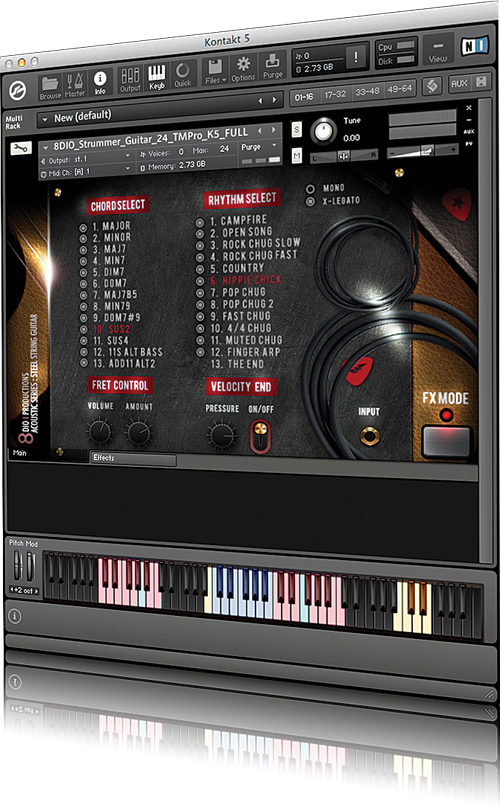8DIO Steel String Strummer Review
Steel String Strummer is the follow-up to 8DIO’s Steel String Guitar library. But while Steel String Guitar focuses on multi-sampling individual notes of the guitar, enabling you to create intricate arpeggiated rhythms and acoustic lead parts, Steel String Strummer focuses on rhythmic, strummed chords. Amazon.co.uk Widgets The library uses NI’s Kontakt Player and requires Kontakt […]

Steel String Strummer is the follow-up to 8DIO’s Steel String Guitar library. But while Steel String Guitar focuses on multi-sampling individual notes of the guitar, enabling you to create intricate arpeggiated rhythms and acoustic lead parts, Steel String Strummer focuses on rhythmic, strummed chords.

The library uses NI’s Kontakt Player and requires Kontakt 4 or above. The install includes instrument patches in both 16- and 24-bit, plus separate Kontakt 5 patches, ‘lite’ versions that use less memory, and a DFD version that streams the samples from disk but omits the X-Legato option and works only at 80BPM, which seems a fairly heavy price to pay.
The manual recommends using the 16-bit versions for composition and switching to the 24-bit version for the final bounce. However, we didn’t encounter any problems running the full Kontakt 5 24-bit patch on a Mac Mini alongside a full mix. Kontakt reported that the patch was using 2.73GB, but individual chord types and rhythms can be de-selected from the interface, which unloads those samples from RAM.
Keeping it Real
Composing with Steel String Strummer is a very fluid process. Chord types are selected with the left hand, while the right hand plays the root of the chord to create the progression. The strumming pattern is selected from the octave above the root note selection, and any note hit hard will strum a big, sustained chord, enabling you to supplement the existing rhythms with additional strums. There’s also an option to play non-tonal muted chugs, which can add considerable realism to a performance.
Mix and Match
To get the most interesting results you need to mix up the chords within a single rhythmic pattern. To achieve this 8DIO has included an X-Legato mode. If used carefully it can produce some really great patterns and riffs, taking your performance beyond what is possible in mono mode. However, it does come at a price in terms of system resources. One area that left us a little confused was the ‘intelligent’ fret noises. On a couple of occasions we noticed fret slides being added when no chord change was taking place, which broke the realism a little. However, it was fairly rare occurrence and one that was easy to overcome with a little work.
Verdict
+ Incredibly easy to use
+ Great-sounding guitar
+ Opens up new chord ideas
– Works only with Kontakt
– Chords can’t be re-voiced
– Not easy to create your own rhythms from scratch
A great tool for bringing a really well recorded acoustic guitar to your compositions without having to hire a session musician and studio.
9/10


